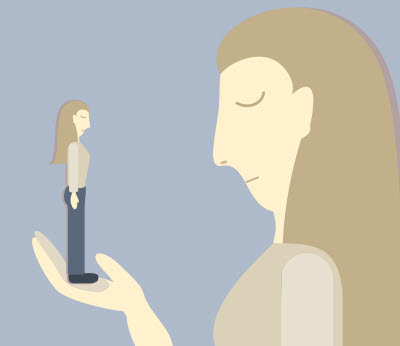
My Approach:
Re-Synching Relationships,
Inside and Out
What is meant by “Integrative?”
 Attempts to describe an approach to therapy that creates integration between the intricate systems of the human mind and body often fall short. Such practice is sometimes described as “integrative” or “holistic.”
Attempts to describe an approach to therapy that creates integration between the intricate systems of the human mind and body often fall short. Such practice is sometimes described as “integrative” or “holistic.”
Sensorimotor psychotherapy founder Pat Ogden uses the terms “unity” and “mind/body/spirit holism” to describe a focus on the interconnected subsystems of a whole that is greater than the sum of its parts.
Each of these terms suggests the intended concepts abstractly but offer little in the way of a clear description of the process and mechanism of change in therapy.
So why does re-aligning our various parts create transformative change in psychotherapy?
When words aren’t enough
As we walk through life, we interact with our environments along multiple channels. In addition to thoughts and feelings, we experience dynamic physical sensations, and we adapt our bodies to fit into the world around us.
All these levels of experience come together to shape our perceptions and behavior – often with seemingly contradictory results. Have you ever intellectually wished to do one thing, but found yourself inexplicably running in the other direction?
 Inherent in our bodily reactions is vital information that too often goes untapped in traditional talk therapy. Our bodies can provide important clues about what we want, how we’ve learned to survive, and how we can begin to make changes.
Inherent in our bodily reactions is vital information that too often goes untapped in traditional talk therapy. Our bodies can provide important clues about what we want, how we’ve learned to survive, and how we can begin to make changes.
By honoring the wisdom of your body and connecting your physical discoveries to your thoughts and feelings, we will work together to address all the important pieces of the puzzle – and help them fit into place.
Multiplicity of Self – Even more puzzle pieces!
 In addition to the multiple ways we process and act on our surroundings, we have different ways of being ourselves – or “parts” of us that emerge in various contexts.
In addition to the multiple ways we process and act on our surroundings, we have different ways of being ourselves – or “parts” of us that emerge in various contexts.
Common vernacular acknowledges the dualities within us. How often do you find yourself saying, “Part of me wants to X, but another part thinks Y”?
Think about the last time a new opportunity came your way. Your initial responses may have been complex or even contradictory, with different parts advocating different strategies.
One part of you wants to dive in right away. Another part may keep you from taking any action, since nothing seems quite right anyway. Perhaps the part that “wins” is the part that decides to forget the whole thing and stay in bed watching YouTube videos.
To protect you from pain, some misguided parts may urge behaviors that are even more destructive than Internet binging. And the more you try to stifle those parts of you – the ones that want to burn it all down, or simply cut and run – the harder they fight for control.
In therapy, we will work to understand and appreciate these divergent impulses. And, by strengthening the part of you that can remain curious, compassionate, and connected in the face of adversity, you can begin to reorganize their efforts in ways that better serve you.
 No One is an Island
No One is an Island
All these systems develop throughout our lives in the context of our relationships with others, starting with our early caregivers, who help us regulate our nervous systems before our young bodies are sophisticated enough to do so independently. Helpless as we are as children, we need to maintain physical and emotional proximity to our caregivers to survive.
As we grow, relationships continue to be linked with our sense of equilibrium. Not only do our early relationships lay the groundwork for our ability to self-regulate – across the lifespan, our sense of emotional attachment to others is vital to our well-being.
When our connection with others gets disrupted, we are programmed to freak out – our nervous systems respond by trying harder to connect, reacting with fear or anger, or checking out physically or emotionally.
In Search of Balance, Within and Between
A major goal of therapy, then, is to harness the complexities of your internal world and redirect them in a way that helps you relate better to yourself and with others.
We will work together to increase your ability to soothe your internal storms and build protection from external threats. And along that journey, you’ll also find the freedom and openness to foster more nourishing connections with others.
I would love to be your guide as you make your way toward wholeness. Reach out and call me today at
(323) 510-1221 for a free 20-minute phone consultation.
